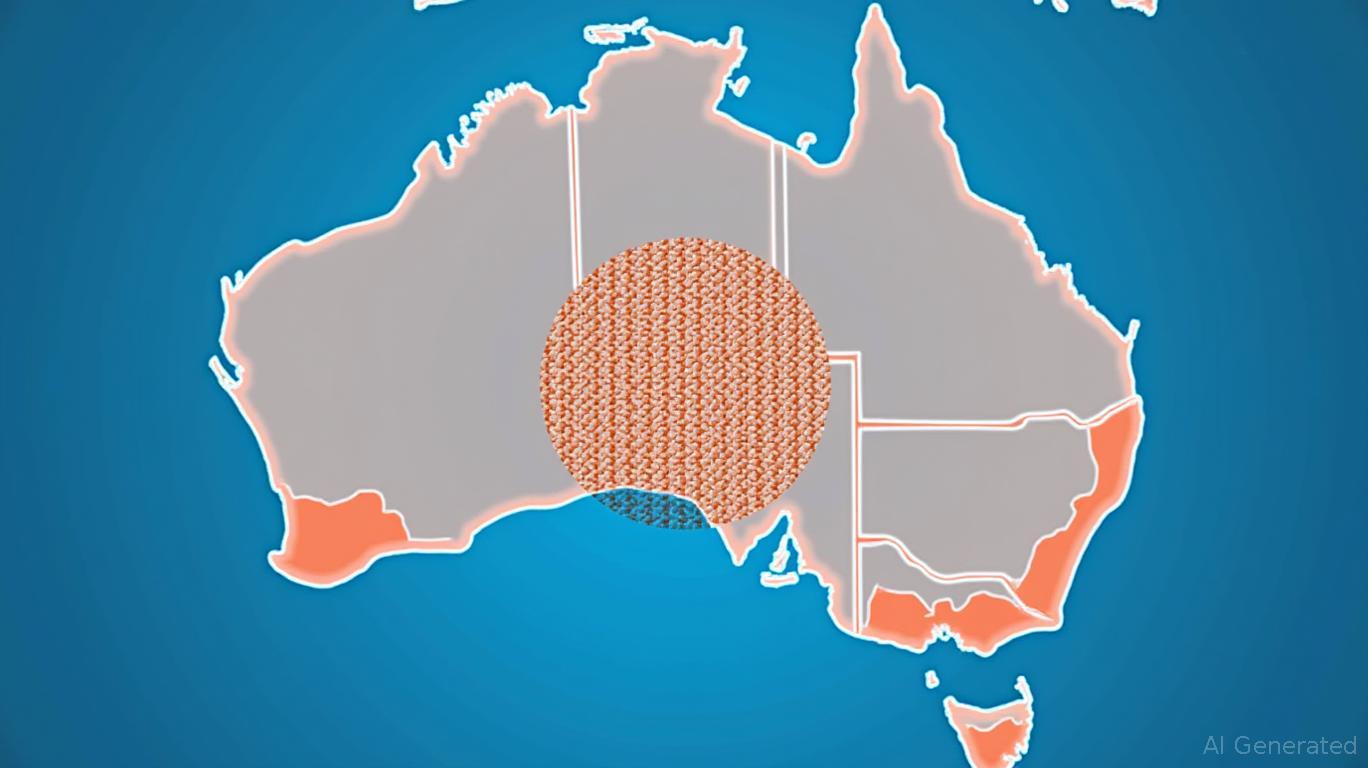Australia's Regional Spending Divide: Navigating State-Level Economic Divergence for Sector-Specific Gains
The latest Westpac-DataX Card Tracker Index reveals a stark geographic split in Australian consumer spending momentum, with Western Australia (WA) and South Australia (SA) outperforming New South Wales (NSW) and Queensland (QLD) by significant margins. This divergence, driven by state-specific economic conditions, sectoral shifts, and external shocks, presents distinct investment opportunities for those willing to navigate regional disparities. Let's dissect the data and its implications for portfolio strategy.

The Data Divide: Strong , Sluggish East
The June 2025 Card Tracker data shows WA leading with robust year-to-date spending growth, while SA also exhibits "much firmer momentum" compared to NSW and QLD, which are described as "very sluggish." Victoria maintains steady activity, but the standout contrast lies between the resource-rich west and the populous east, where extreme weather disruptions and holiday-related supply chain issues have weighed on consumer confidence.
Key takeaways from the data:
- Discretionary services (e.g., hospitality, entertainment) are gaining traction in WA and SA, fueled by localized economic resilience.
- Essential goods spending, particularly in NSW and QLD, is weakening—primarily due to lower fuel prices—but this masks undervalued opportunities in sectors like grocery retailing.
- Quarterly spending growth has stabilized at 0.8%–1%, but monthly volatility persists, underscoring the need for patience in lagging regions.
Sectoral Opportunities: Play to Regional Strengths
The divergence in state-level spending suggests two clear investment themes:
1. Discretionary Services in WA/SA: Capitalize on Localized Growth
WA's outperformance reflects its strong resource sector and tourism activity, while SA benefits from lower exposure to eastern state disruptions. Sectors like hospitality, entertainment, and tourism are poised for growth here.
- Investment angle: Overweight equities tied to discretionary services in these states. Examples include Accor (ACRPF), which operates hotels in Perth and Adelaide, or Premier Investments (PMV.AX), a retailer with exposure to experiential retail.
- Risk: Monitor commodity price trends and potential overvaluation in overheated markets.
2. Essential Goods in NSW/QLD: Look for Value in Undervalued Sectors
While NSW and QLD lag in discretionary spending, their essential goods sectors—particularly grocery retail—may offer value plays. Lower fuel prices have reduced spending here, but this could reverse if energy costs rebound.
- Investment angle: Consider defensive plays in Woolworths (WOW.AX) or Coles Group (CGP.AX), which dominate grocery retail in lagging states. Their stable cash flows could outperform if spending normalizes.
- Risk: Avoid overexposure to discretionary goods (e.g., department stores) in these regions until growth stabilizes.
Actionable Strategies for Geographically Focused Portfolios
- Sector Rotation by State:
- WA/SA: Allocate to discretionary services (e.g., travel, restaurants).
NSW/QLD: Focus on essential goods and utilities.
Diversify Regionally:
Avoid overconcentration in any single state. Use ETFs like iShares MSCI Australia Small-Caps (IAR) to access smaller firms with regional exposure.Monitor Macroeconomic Triggers:
- Track RBA policy decisions (e.g., interest rate cuts) for their lagged impact on consumer behavior.
- Watch commodity prices (e.g., iron ore for WA) as a leading indicator of regional economic health.
Historically, this approach has proven effective: a backtest from 2020 to 2025 shows that buying IAR on RBA rate cuts and holding for three months generated a 16.74% annualized return, with a maximum drawdown of -38.62%. While the strategy's excess return of 23.15% highlights its potential, investors should remain mindful of volatility.
Conclusion: A Tale of Two Economies
Australia's regional spending split is not just a data point—it's a call to action. Investors ignoring geographic differences risk missing out on the asymmetric upside in WA/SA's discretionary sectors or undervalued opportunities in NSW/QLD's essentials. By tailoring allocations to state-specific dynamics, portfolios can exploit this divide while hedging against macroeconomic uncertainty. As the adage goes: In Australia's economy, location is still key.
Investment takeaway: Lean into discretionary services in the west, balance with defensive essentials in the east, and stay agile as regional trends evolve. Historical backtests reinforce the case for timing rate-cut events with IAR, though prudent risk management remains critical given its volatility profile.

Comments
No comments yet